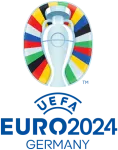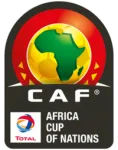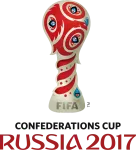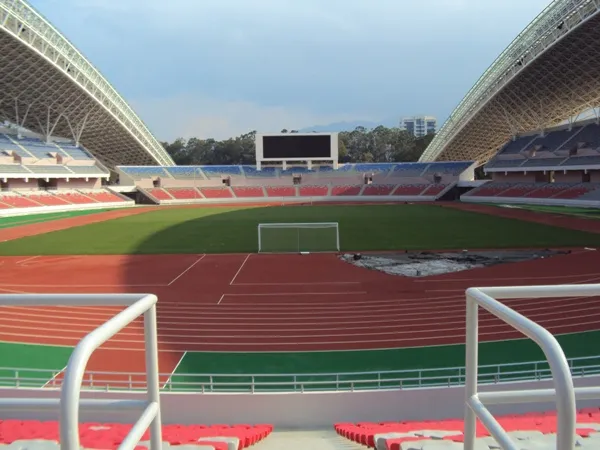- BETTING TIPS
- BETTING TIPS NAVIGATIONS
 Premier League
Premier League FA Cup
FA Cup League Cup
League Cup La Liga
La Liga Copa del Rey
Copa del Rey Super Cup
Super Cup Champions League
Champions League Europa League
Europa League Europa Conference League
Europa Conference League World Cup
World Cup Euro Championship
Euro Championship Nations League
Nations League Africa Cup of Nations
Africa Cup of Nations Copa America
Copa America International Friendly
International Friendly Confederations Cup
Confederations Cup Serie A
Serie A Coppa Italia
Coppa Italia Super Cup
Super Cup Bundesliga
Bundesliga Ligue 1
Ligue 1 DFB Pokal
DFB Pokal Super Cup
Super Cup Malaysia Super League
Malaysia Super League Coupe de France
Coupe de France Trophée des Champions
Trophée des Champions Pro League
Pro League
- Teams
- TEAMS NAVIGATIONS
 Premier League
Premier League FA Cup
FA Cup League Cup
League Cup La Liga
La Liga Copa del Rey
Copa del Rey Super Cup
Super Cup Champions League
Champions League Europa League
Europa League Europa Conference League
Europa Conference League World Cup
World Cup Euro Championship
Euro Championship Nations League
Nations League Africa Cup of Nations
Africa Cup of Nations Copa America
Copa America International Friendly
International Friendly Confederations Cup
Confederations Cup Serie A
Serie A Coppa Italia
Coppa Italia Super Cup
Super Cup Bundesliga
Bundesliga Ligue 1
Ligue 1 DFB Pokal
DFB Pokal Super Cup
Super Cup Malaysia Super League
Malaysia Super League Coupe de France
Coupe de France Trophée des Champions
Trophée des Champions Pro League
Pro League
- Fixtures & Results
- Fixtures & Results NAVIGATIONS
 Premier League
Premier League FA Cup
FA Cup League Cup
League Cup La Liga
La Liga Copa del Rey
Copa del Rey Super Cup
Super Cup Champions League
Champions League Europa League
Europa League Europa Conference League
Europa Conference League World Cup
World Cup Euro Championship
Euro Championship Nations League
Nations League Africa Cup of Nations
Africa Cup of Nations Copa America
Copa America International Friendly
International Friendly Confederations Cup
Confederations Cup Serie A
Serie A Coppa Italia
Coppa Italia Super Cup
Super Cup Bundesliga
Bundesliga Ligue 1
Ligue 1 DFB Pokal
DFB Pokal Super Cup
Super Cup Malaysia Super League
Malaysia Super League Coupe de France
Coupe de France Trophée des Champions
Trophée des Champions Pro League
Pro League
- Tables
- Tables NAVIGATIONS
 Premier League
Premier League FA Cup
FA Cup League Cup
League Cup La Liga
La Liga Copa del Rey
Copa del Rey Super Cup
Super Cup Champions League
Champions League Europa League
Europa League Europa Conference League
Europa Conference League World Cup
World Cup Euro Championship
Euro Championship Nations League
Nations League Africa Cup of Nations
Africa Cup of Nations Copa America
Copa America International Friendly
International Friendly Confederations Cup
Confederations Cup Serie A
Serie A Coppa Italia
Coppa Italia Super Cup
Super Cup Bundesliga
Bundesliga Ligue 1
Ligue 1 DFB Pokal
DFB Pokal Super Cup
Super Cup Malaysia Super League
Malaysia Super League Coupe de France
Coupe de France Trophée des Champions
Trophée des Champions Pro League
Pro League
- News
- News NAVIGATIONS
 Premier League
Premier League FA Cup
FA Cup League Cup
League Cup La Liga
La Liga Copa del Rey
Copa del Rey Super Cup
Super Cup Champions League
Champions League Europa League
Europa League Europa Conference League
Europa Conference League World Cup
World Cup Euro Championship
Euro Championship Nations League
Nations League Africa Cup of Nations
Africa Cup of Nations Copa America
Copa America International Friendly
International Friendly Confederations Cup
Confederations Cup Serie A
Serie A Coppa Italia
Coppa Italia Super Cup
Super Cup Bundesliga
Bundesliga Ligue 1
Ligue 1 DFB Pokal
DFB Pokal Super Cup
Super Cup Malaysia Super League
Malaysia Super League Coupe de France
Coupe de France Trophée des Champions
Trophée des Champions Pro League
Pro League
- Live ScoresLive
Costa Rica
Costa-Rica| Country | : | Costa-Rica |
| League | : | |
| Founded | : | 1921 |
| Venue | : | Snapdragon Stadium |
| Coach | : | Miguel Herrera (Mexico) |
Venue

Snapdragon Stadium
| City | : | San Diego, California |
| Capacity | : | 35,000 |
| Surface | : | Grass |
The Costa Rica national football team, often referred to as "La Sele," is a proud and competitive team in Central America. The team has a rich history, with notable achievements in international football, including multiple World Cup appearances and regional successes. Known for their resilience, tactical discipline, and strong team spirit, Costa Rica has earned the respect of football fans around the world. The team’s incredible performances on the international stage have solidified Costa Rica’s place in global football.
Early History and Development of Costa Rican Football
Football in Costa Rica was introduced in the late 19th century, and the country quickly became passionate about the sport. Costa Rica’s national team played its first international match in 1921 against El Salvador, and the team gradually grew in strength and experience. Costa Rica’s footballing infrastructure, including domestic leagues and youth development programs, has played a significant role in nurturing talented players who have gone on to represent the national team.
Costa Rica's World Cup Journey
Costa Rica has participated in five FIFA World Cup tournaments, with its most successful performance coming in 2014 when the team reached the quarterfinals. Known for their defensive solidity and counter-attacking style, Costa Rica has earned a reputation as a tough team to beat in major international tournaments. The country’s World Cup journey has been marked by incredible performances, unexpected upsets, and a commitment to making their mark on the global stage.
Match Predictions
- Tamworth vs. Leyton Orient Predictions & Betting Tips on Nov 04 - 03:30 AM
- Sunderland vs. Everton Predictions & Betting Tips on Nov 04 - 04:00 AM
- Tottenham vs. Manchester United Predictions & Betting Tips on Nov 08 - 20:30 PM
- Everton vs. Fulham Predictions & Betting Tips on Nov 08 - 23:00 PM
- West Ham vs. Burnley Predictions & Betting Tips on Nov 08 - 23:00 PM
1990 FIFA World Cup: Costa Rica's First Historic Appearance
Costa Rica made its World Cup debut in 1990, held in Italy. Under coach Rodrigo Kenton, Costa Rica performed admirably in their first-ever appearance on the world stage. The team managed to make it out of the group stage, defeating Scotland 1-0 and drawing with Brazil and Sweden. Costa Rica’s efforts earned them a place in the Round of 16, where they were eliminated by Romania, but the 1990 World Cup remains one of the team's proudest moments.
2002 FIFA World Cup: Costa Rica’s Second Appearance
Costa Rica qualified for the 2002 FIFA World Cup in South Korea and Japan but was unable to replicate the success of 1990. The team was placed in a difficult group with Brazil, Turkey, and China, and despite strong performances, Costa Rica failed to progress to the knockout stages. However, the experience of competing in the World Cup was vital for Costa Rican football, as it helped develop the team for future competitions.
2006 FIFA World Cup: Costa Rica’s Strong Showing
In the 2006 FIFA World Cup in Germany, Costa Rica was placed in a challenging group with Germany, Poland, and Ecuador. Although Costa Rica failed to make it past the group stage, they earned a valuable point in a 2-2 draw with Germany, a testament to their competitive spirit. The team’s performances in 2006 further solidified Costa Rica's place among the competitive teams in the world.
2014 FIFA World Cup: A Historic Quarterfinal Run
Costa Rica’s 2014 World Cup campaign in Brazil was one of the most remarkable in the history of the team. Under coach Jorge Luis Pinto, Costa Rica defied expectations by topping a group that included three former World Cup champions: Uruguay, Italy, and England. Costa Rica’s defense, led by goalkeeper Keylor Navas, was key to their success, and the team reached the quarterfinals, where they were narrowly defeated by the Netherlands in a penalty shootout. The 2014 World Cup remains Costa Rica’s most successful and memorable tournament to date.
2018 FIFA World Cup: A Solid but Disappointing Performance
Costa Rica qualified for the 2018 FIFA World Cup in Russia, marking their fifth appearance in the tournament. The team was placed in a tough group with Brazil, Switzerland, and Serbia. Costa Rica fought hard but ultimately finished third in the group and did not progress to the knockout stages. Despite their early exit, the team’s performances were a testament to their fighting spirit and commitment to representing their country on the world stage.
CONCACAF Gold Cup Success
Costa Rica has been a dominant force in the CONCACAF Gold Cup, the premier football tournament in North and Central America. The team has reached the finals several times and has won the competition on multiple occasions. Costa Rica's success in the Gold Cup reflects their strength in regional football, and the team has consistently proven to be one of the top teams in the CONCACAF region.
1963 CONCACAF Gold Cup: Costa Rica’s First Victory
Costa Rica’s first major regional triumph came in the 1963 CONCACAF Gold Cup. The team defeated the United States in the final, capturing the title and marking the beginning of their success in regional football competitions.
2002 CONCACAF Gold Cup: Costa Rica’s Second Title
In the 2002 CONCACAF Gold Cup, Costa Rica once again proved their dominance in the region. The team, led by captain and star player Paulo Wanchope, triumphed in the final, defeating the United States 2-0 to win their second Gold Cup title.
2017 CONCACAF Gold Cup: A Strong Final Appearance
Costa Rica reached the final of the 2017 CONCACAF Gold Cup, where they faced the United States. Despite putting up a valiant fight, Costa Rica was defeated 2-1, but their run to the final highlighted the strength and consistency of the team in regional competitions.
Legendary Players of Costa Rica’s National Team
Costa Rica has produced a number of world-class players who have made significant contributions to the national team’s success. These players have become legends in Costa Rican football and are celebrated for their talent, determination, and dedication to the national cause.
Keylor Navas: The Hero Between the Posts
Keylor Navas is arguably the greatest player in the history of Costa Rican football. As the team’s goalkeeper, Navas has been instrumental in Costa Rica’s success in international tournaments, particularly during the 2014 World Cup, where he was a key figure in the team’s historic quarterfinal run. Navas' reflexes, shot-stopping ability, and leadership have made him one of the best goalkeepers in the world. He has played for top clubs like Real Madrid and Paris Saint-Germain.
Paulo Wanchope: The Striker Who Defined a Generation
Paulo Wanchope is one of Costa Rica’s greatest-ever players. A prolific striker with a keen eye for goal, Wanchope represented Costa Rica in multiple World Cups and helped lead the team to success in regional competitions, including the 2002 CONCACAF Gold Cup. His ability to score goals and create chances made him a key player for Costa Rica for over a decade.
Bryan Ruiz: The Creative Playmaker
Bryan Ruiz is a talented attacking midfielder and one of Costa Rica’s most influential players in recent years. Ruiz played an integral role in the team’s success in the 2014 World Cup and is known for his vision, creativity, and technical ability. His leadership on and off the pitch has been invaluable for Costa Rica, and he has enjoyed successful club stints in Europe.
Costa Rica’s Football Culture and Development
Football is a national passion in Costa Rica, and the sport plays a significant role in the country's culture and identity. From the streets of San José to the small towns across the country, football is woven into the fabric of everyday life. Costa Rica has a strong football infrastructure, with clubs like Deportivo Saprissa, Alajuelense, and Herediano serving as key players in the development of young talent. The national team benefits from a rich talent pool that is nurtured through domestic leagues and youth academies.
Costa Rica’s Future in Football
Costa Rica’s future in football looks bright, with a new generation of young players emerging. The team’s youth development system continues to produce talented footballers who will help carry the torch for Costa Rican football in the years to come. With players like Francisco Calvo, Johan Venegas, and others, Costa Rica is well-positioned to remain competitive in international tournaments and continue to build on their successes.
Conclusion: Costa Rica’s Legacy in World Football
Costa Rica’s national football team may not have the same level of international recognition as some of the world’s football giants, but their achievements on the global stage have earned them the respect of fans and pundits alike. With five World Cup appearances, multiple Gold Cup titles, and a long history of producing talented players, Costa Rica has firmly established itself as a force in Central American football. The team’s success, resilience, and passionate fan base ensure that Costa Rica’s legacy in world football will continue for years to come.
News & Updates


